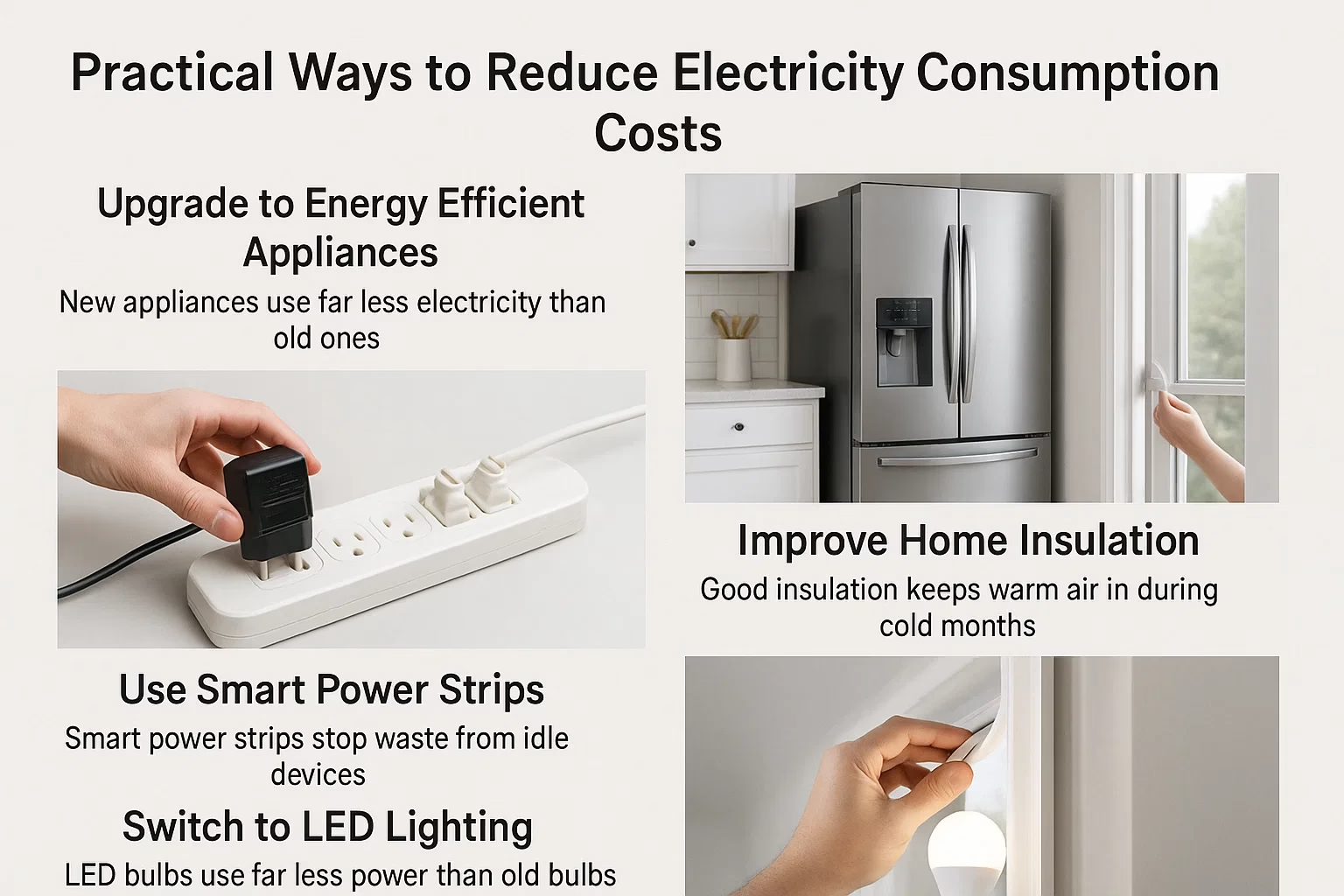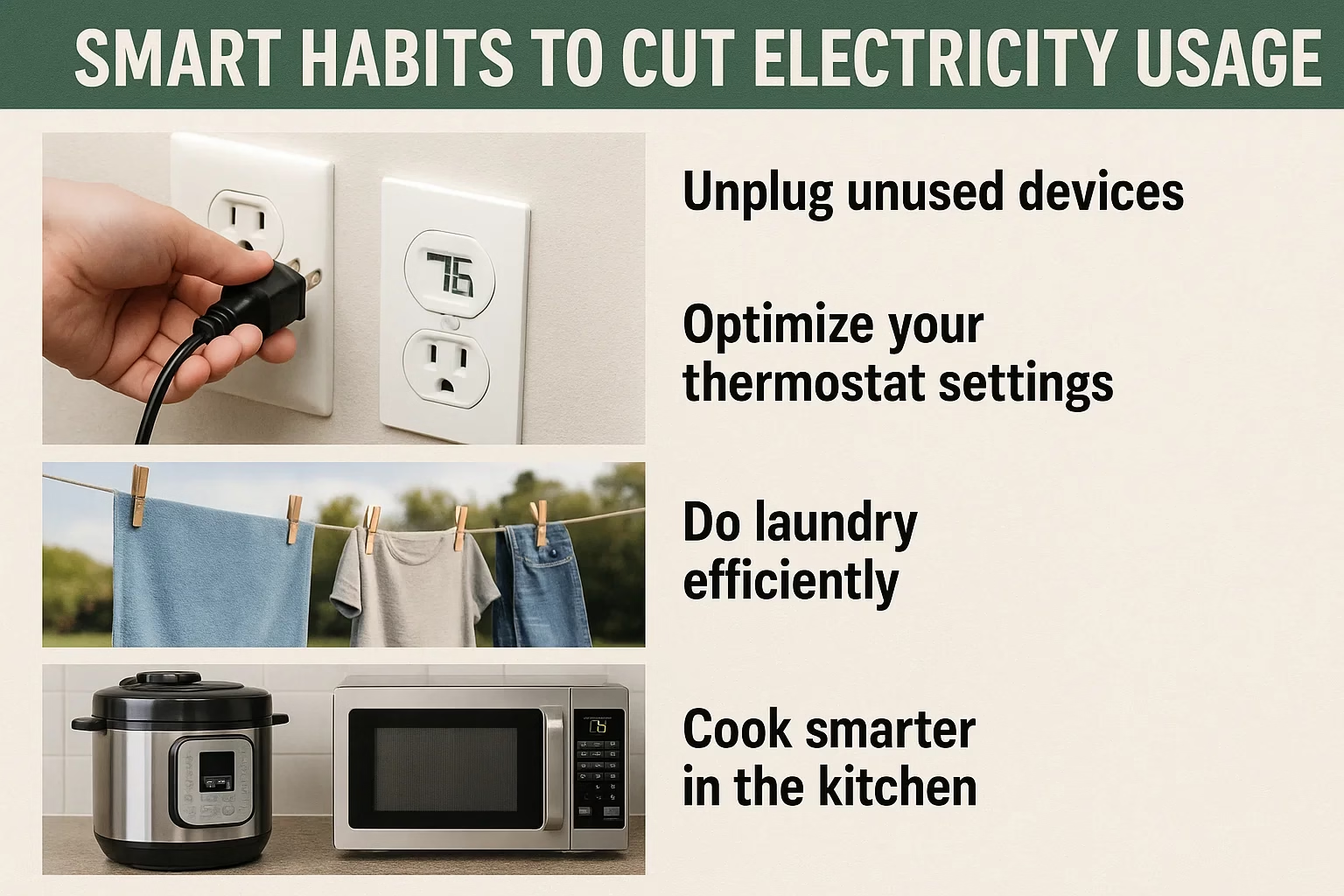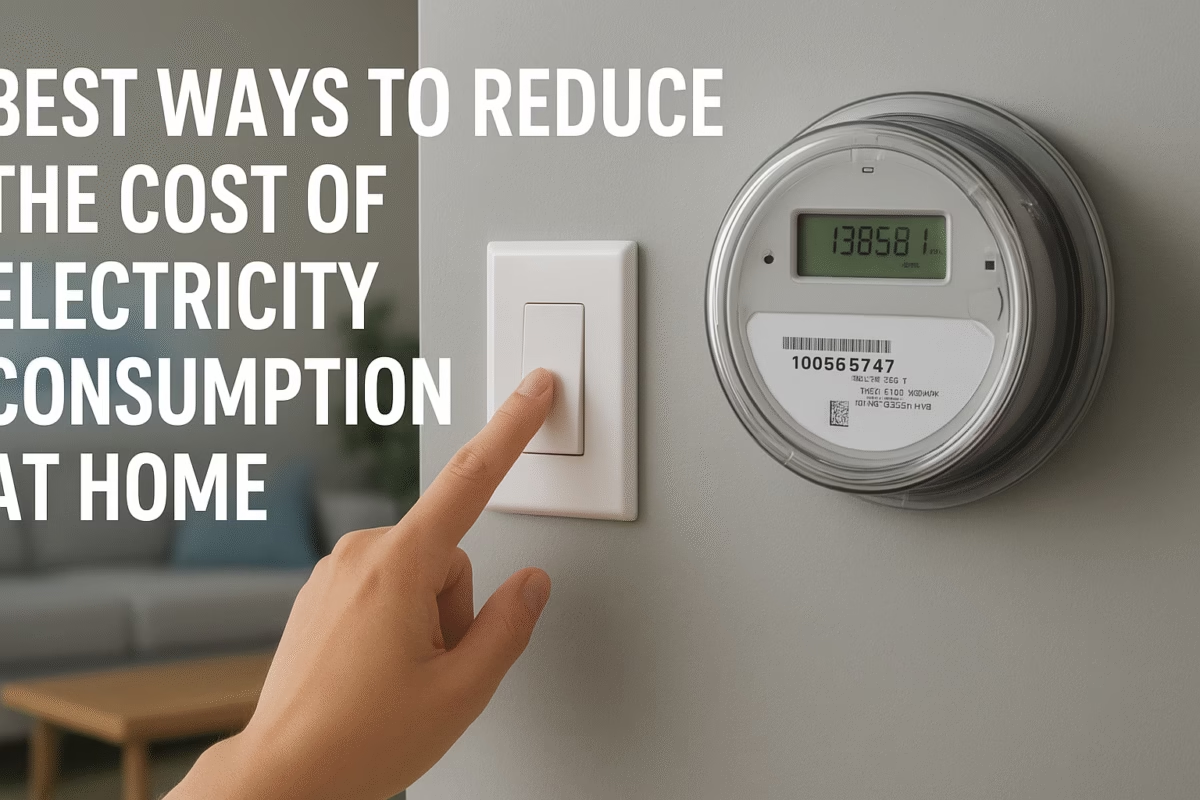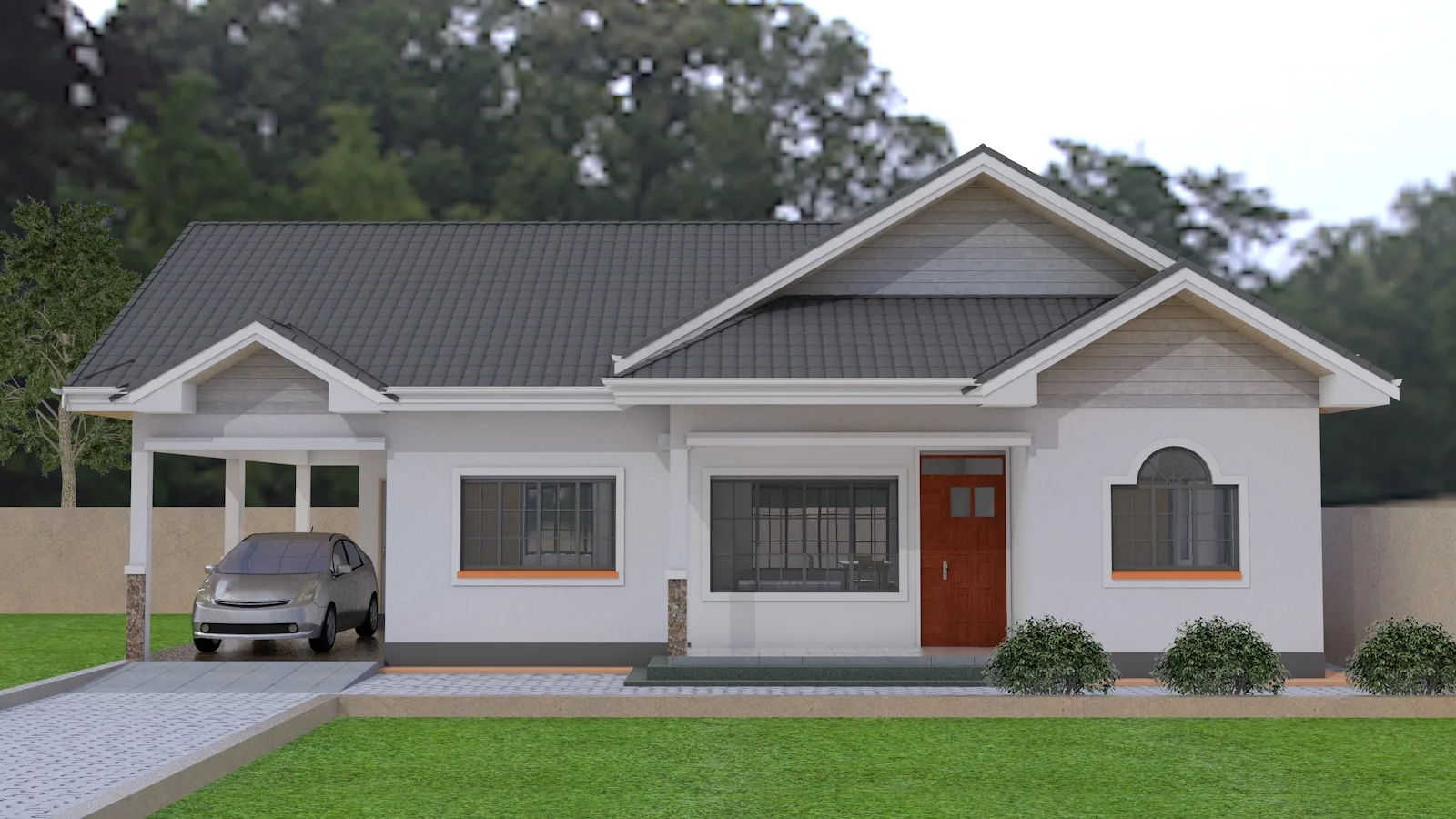Real Estate, Interior Design
5 Best Ways to Reduce the Cost of Electricity Consumption at Home
Electricity consumption affects every home and shapes our monthly bills. Many people want to cut these costs but are not sure where to begin. Small changes in how we use power can lead to real savings. When you understand what uses the most energy in your home, you can start to make smarter choices. Lowering your bill also helps the environment. Each step you take brings you closer to a home that wastes less and saves more.
Understanding household electricity usage
Every home uses electricity in different ways. Heating and cooling often use the most energy because these systems run for long periods. Water heaters also draw a large amount of power each day. Lighting uses less energy but can add up when many lights stay on. Kitchen appliances like refrigerators run all the time and can raise your bill if they are old. Devices such as computers, TVs, and chargers also use energy even when you are not using them. When you know what uses the most power, you can make better choices to lower your electricity use.
Cutting electricity consumption doesn’t just save money. It also reduces environmental impact. Every kilowatt-hour saved means fewer carbon emissions and a more sustainable home.
Common Causes of High Electricity Bills
Inefficient appliances
Old appliances use more electricity than modern ones. Many older fridges, cookers and heaters work harder to produce the same results. Their motors and parts wear out with time. This causes them to draw more power than they should. A single old fridge can raise your bill by a large amount. Replacing one outdated appliance can lead to clear savings. Using efficient models also cuts heat loss and wasted power.
Phantom energy consumption
Many devices keep using power even when they look off. This is known as standby power use. Chargers, TVs, speakers and game consoles are common examples. They stay ready to work at any moment. This constant draw may look small but it builds up. You pay for energy you never use. Unplugging devices or using smart power strips stops this quiet waste. Small changes here can lower your monthly bill.
Poor insulation and air leaks
A home with weak insulation loses warm or cool air fast. This forces the heater or air conditioner to run longer. Gaps around windows and doors also let air escape. You may not see these leaks but you feel them in your bill. Weatherstripping and caulking close these gaps. Adding insulation keeps indoor air steady. Better insulation reduces strain on your heating and cooling system. This leads to lower energy use and a more comfortable home.
Ineffective lighting
Old bulbs waste most of their power as heat. They burn brighter than needed and use far more electricity. They also burn out faster which means more replacements and extra cost. LED bulbs solve this problem. They use a small amount of power to produce the same light. They stay cool and last for years. Changing all your bulbs to LED cuts lighting costs fast. Even one room can show a clear difference in your bill.
Practical Ways to Reduce Electricity Consumption Costs

Upgrade to energy efficient appliances
New appliances use far less electricity than old ones. Their motors and parts work with less effort. This lowers the amount of power needed for daily tasks. A modern fridge or cooker can cut your bill right away. Many of these appliances also run quieter and last longer. They keep steady temperatures and waste less energy during use. Replacing old units brings clear savings over time. One upgrade can change your monthly bill in a big way.
Benefits of Energy Star rated devices
These appliances meet strong energy use rules. They use less power while doing the same job. Many homes see sharp drops in electricity use after switching. The savings continue every month. These devices also give steady performance and reduce heat loss. They help control both energy waste and long term cost.
Comparing old and new appliance savings
Older appliances lose efficiency with age. Their motors and parts wear down. This forces them to run longer and pull more power. New models use advanced systems that save energy. A new fridge can cost half as much to run each year. The difference becomes clear when you track your bills. Replacing even one old appliance can bring strong savings.
Use smart power strips
Smart power strips stop waste from idle devices. Many items keep drawing power even when off. These strips sense when a device is not in use. They cut the power on their own. This simple change stops silent energy loss. It also protects your devices from small power spikes. Using smart strips in key areas of your home lowers your bill with little effort.
What phantom load means
Phantom load is the power used by idle devices. Chargers, TVs and game consoles are common sources. They use a small amount of power all day. This adds up by the end of the month. Stopping this waste is an easy win for your home.
How smart strips help
Smart strips break the power flow when the device is not active. They remove the need to unplug items over and over. They keep your home safer and more efficient. Many people see quick savings after using them for a month.
Improve home insulation
Good insulation keeps warm air in during cold months. It also holds cool air in during hot months. This reduces the amount of time your heater or air conditioner must run. Weak insulation causes your system to work harder. This leads to higher electricity use and higher bills.
Sealing doors and windows
Small gaps around windows and doors let air escape. You can feel some leaks by moving your hand near the frame. Weatherstripping and caulking seal these gaps. These fixes are simple and quick. They stop air loss and help your home stay comfortable.
Adding insulation to attics and walls
Many homes lose air through the roof and walls. Adding insulation solves this problem. It keeps indoor temperature steady and reduces energy use. Strong insulation can cut heating and cooling costs by up to thirty percent. This upgrade brings long term comfort and savings.
Switch to LED lighting
LED bulbs use far less power than old bulbs. They also last much longer. This makes them one of the easiest ways to save money. LED bulbs stay cool and waste almost no energy as heat. They give bright light with very little power.
Advantages of LED bulbs
LED bulbs lower energy use each time you turn on a light. They run cool and reduce the strain on fixtures. They last for years and reduce how often you need to replace bulbs. This cuts both energy and maintenance costs.
How much you can save annually
LED bulbs can lower your lighting cost by up to seventy five percent. A full switch in your home can bring large yearly savings. Even changing a few bulbs can show a difference in your bill.
Smart Habits to Cut Electricity Usage

Unplug unused devices
Many devices keep using power when they look off. This silent pull adds to your bill each month. Unplug chargers, speakers, and small appliances when you finish using them. Do the same with TVs and game consoles if you will be away for hours. These small steps reduce waste with little effort. An unplugged device cannot draw any power. This simple habit brings steady savings over time.
Optimize your thermostat settings
Small changes to your thermostat can lower energy use. Set it a few degrees higher in warm months. Set it a few degrees lower in cold months. Your heater and air conditioner will run less and use less power. You stay comfortable while cutting your bill. Many homes see large savings with this one habit. A steady thermostat also reduces wear on your system.
Do laundry efficiently
Laundry uses a large amount of power in many homes. Washing clothes with cold water cuts energy use right away. Most loads clean well without hot water. Cold water also protects your clothes and makes them last longer. Air drying saves even more power. Dryers pull a lot of electricity each cycle. Hanging clothes on a line or rack costs nothing and works well. These habits reduce energy use and protect your fabrics.
Wash with cold water
Cold water removes dirt from most clothes. It also stops excess wear on fabric. Your washer uses far less power in each load. This leads to clear savings on your monthly bill.
Air drying clothes to save energy
Air drying cuts dryer use and lowers heat in your home. It is free and easy to do. Clothes dry well in open air and stay in good shape. You also avoid the risk of shrinking or fading from high heat.
Cook smarter in the kitchen
Cooking choices can raise or lower your energy use. Some tools use less power and cook food faster. Pressure cookers and microwaves need much less electricity than ovens. They heat food quickly and lose little energy in the process. Use the oven only when you must. It draws a large amount of power each time you turn it on. Plan meals that use quick cooking tools for daily use. This keeps cooking costs low without reducing quality.
Use pressure cookers and microwaves
These tools heat food fast and use little electricity. They cut cooking time and energy waste. Many meals turn out well with these simple tools.
Limit oven use
Ovens warm slow and use a lot of power. Save them for meals that need long or even heat. Choose quicker methods when possible. This habit keeps your kitchen cool and reduces your bill.
Using Technology to Reduce Electricity Consumption
Smart meters
Smart meters help you understand how much electricity you use each day. They show real time data that is easy to read. You can see which hours use the most power. This helps you change habits fast. You learn which appliances draw the most energy. You also see how small changes affect your bill. Many people adjust their routines once they see the numbers. Smart meters give you clear control over your energy use.
Smart thermostats
Smart thermostats adjust indoor temperature on their own. They learn your daily routine and match your comfort needs. They lower heat or cooling when you leave home. They raise it again before you return. This cuts waste and keeps your home steady. You can also control them through your phone. This helps you make changes while away. A smart thermostat reduces strain on your heater and air conditioner. Many homes see strong savings soon after installing one.
Solar powered devices
Small solar devices help reduce your daily power use. These tools collect sunlight and store it as energy. Garden lights are a good example. They charge during the day and shine at night without using house power. Solar chargers can power small items like phones or radios. They work well on bright days and cut your need for wall outlets. These devices cost little to run and last for years. They also give you power during outages or outdoor use.
Seasonal Tips to Lower Electricity Cost
Summer electricity saving tips
Close blinds to reduce heat
Sunlight warms your home fast during summer. Closing blinds keeps rooms cooler during the day. This reduces the need for air conditioning. It also protects your furniture from fading. Simple steps like this lower indoor heat without extra cost.
Use fans instead of AC
Fans use far less electricity than air conditioners. They move air around the room and create a cool feel. A ceiling fan or standing fan can lower your comfort needs by several degrees. You can run your AC less when fans are in use. This cuts power use while keeping the room pleasant.
Avoid using heat generating appliances during peak hours
Many kitchen tools produce a lot of heat. Ovens, stoves and dryers raise indoor temperature fast. Using them during the hottest hours forces your air conditioner to work harder. Try cooking earlier in the day or later in the evening. Run the dryer during cooler hours as well. These habits keep your home cool and reduce energy use.
Winter electricity saving tips
Wear warm clothing indoors
Warm layers reduce your need for extra heat. A sweater or thick socks can make a big difference. This allows you to lower your thermostat a little. You stay comfortable while using less electricity. Warm clothing is a simple and low cost way to cut winter bills.
Use space heaters wisely
Space heaters warm a small area fast. They help heat only the rooms you use most. This prevents waste from heating the entire home. Keep the heater at a safe distance from objects. Turn it off when leaving the room. Smart use of a space heater lowers energy use and adds comfort on cold days.
Keep doors closed to retain heat
Open doors let warm air escape into cooler rooms. Closing doors traps heat where you need it most. This reduces strain on your heating system. It also creates a steady temperature in each room. This habit is simple but very effective. Your home stays warmer while using less power.
Long-Term Investments for Electricity Savings
Install solar panels
Solar panels give your home a steady source of clean energy. They turn sunlight into power you can use each day. This cuts your monthly bill and lowers strain on the grid. Many homes produce most of their electricity through solar. Some even produce extra power that goes back to the grid. Solar panels work well in areas with strong sun. They last for many years with little upkeep. The cost of installation may feel high at first. The long term savings make the investment worth it. Once installed, you enjoy free power from the sun.
Invest in home energy audits
A home energy audit shows where your house loses energy. A trained expert checks your windows, doors, walls and roof. They also test your heating and cooling system. The audit reveals weak spots that raise your bill. You get a clear list of areas that need attention. Fixing these issues improves comfort and saves electricity. Many homes discover leaks they never knew existed. Some find old parts that use far too much power. The audit helps you make smart choices that bring lasting results.
Replace old wiring systems
Old wiring can waste energy and create safety risks. Worn wires lose power as it travels through the home. Some wiring cannot support modern appliances. This forces your system to work harder each day. A full wiring upgrade solves these problems. New wiring delivers steady power with less waste. It also reduces the risk of sparks or faults. This keeps your home safe while lowering long term energy use. An electrician can inspect your system and guide you on needed fixes. Once updated, your home becomes more efficient and reliable.
Conclusion
Reducing electricity use at home is easier than most people think. Small changes make a real difference when you stick with them. Simple habits lower waste and bring steady savings each month. Smart tools and home upgrades add even more value over time. Each step keeps your home comfortable while cutting your bill. You gain control of your energy use and protect your budget.
If you want deeper support with your home, Nyolenju Structures Limited is ready to help. Our team guides you through smart building choices that lower long term energy use. We also provide plans that follow all building rules and support better energy performance.
Start with one change today. Pick an area you can improve and take action. When you need expert plans or building guidance, reach out to Nyolenju Structures Limited. We help you build safe spaces that save power and money. Your next step can begin right now.
FAQs
1. What is the easiest way to reduce electricity consumption at home?
Switching to LED bulbs and unplugging unused devices are the quickest and simplest methods.
2. Do energy-efficient appliances really save money?
Yes. They may cost more upfront, but they reduce electricity usage significantly over time.
3. How much can proper insulation save on energy bills?
Good insulation can reduce heating and cooling costs by up to 30%.
4. Are smart thermostats worth it?
Absolutely. They optimize heating and cooling automatically, leading to noticeable savings.
5. What are phantom loads?
Phantom loads are the electricity devices use when plugged in but not actively operating.


